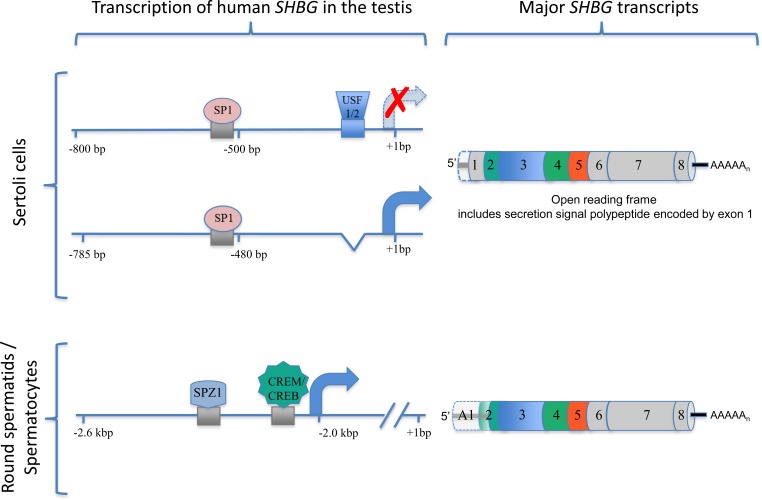FIG. 3.
Positions of key regulatory elements that control human SHBG transcription in different cell types in the testis. In Sertoli cells, the binding site of USF1/2 to the SHBG proximal promoter (see Fig. 2) blocks its transcription in Sertoli cells. Removal of this USF1/2-binding site from the human SHBG proximal promoter restores its activity in Sertoli cells in vivo in transgenic mice and in mouse Sertoli cells in culture. This modified human SHBG promoter also responds to hormones in the same way as the rat Shbg in Sertoli cells, producing a transcript encoding the SHBG precursor that can be secreted. A conserved SP1-binding site in the corresponding rat Shbg promoter plays a key role in its expression in Sertoli cells, and it probably acts in the same way in the human SHBG promoter that lacks the USF1/2-binding site. In round spermatids and spermatocytes, the SHBG promoter sequence that is active in hepatocytes is silent. Instead, a promoter sequence flanking an alternative exon 1 sequence located approximately 2 kbp upstream is active and under the control of at least two cis-elements for key transcription factors (SPZ1 and CREB/CREM) that influence the expression of genes in these cells.

